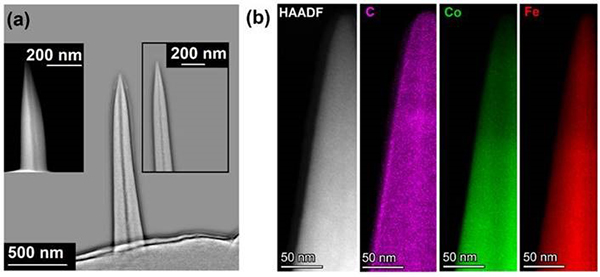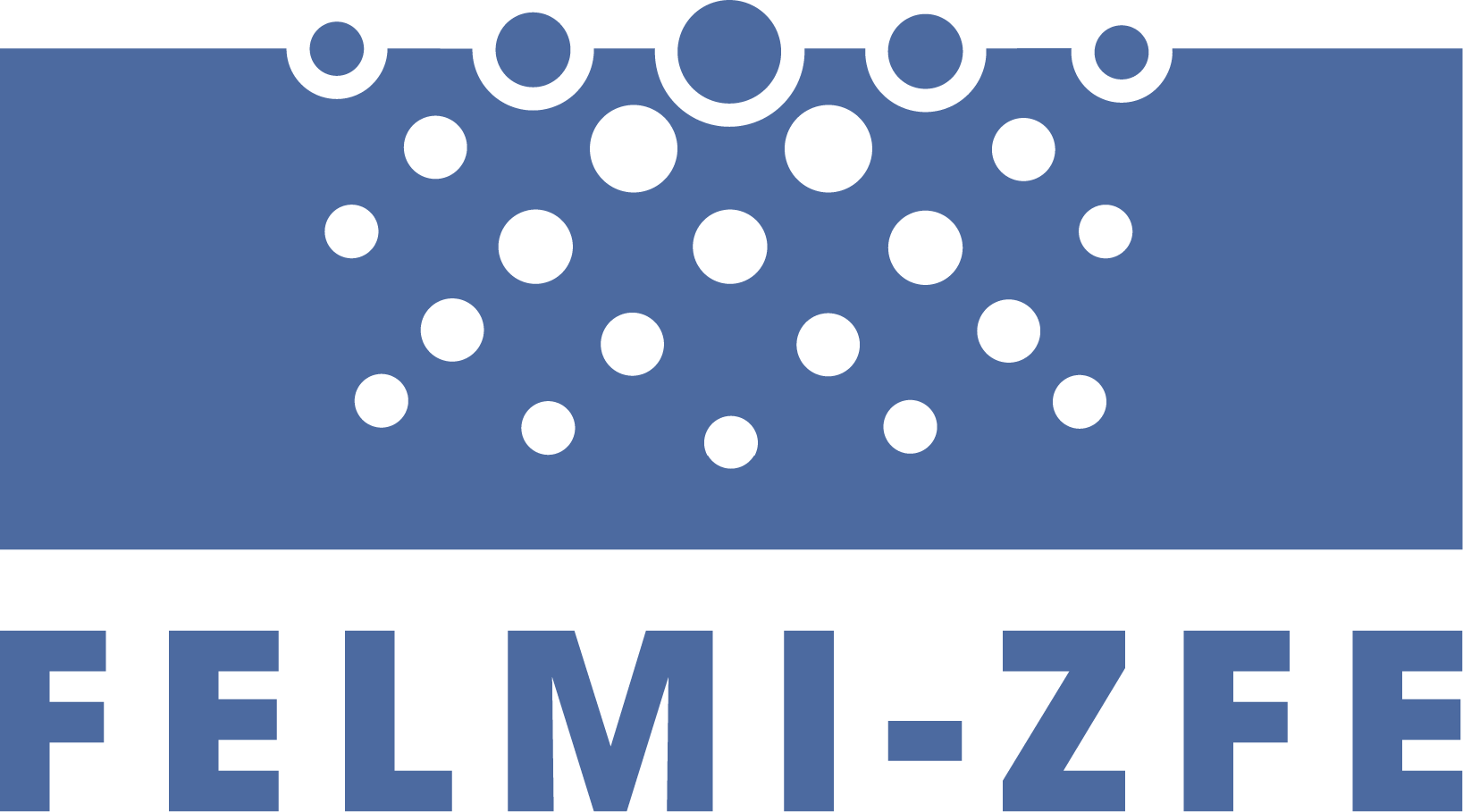Content
In the case of Co3Fe FEBID Pillars, we were surprised to discover a channel along the long central axis that is only a few nanometers thick. TEM investigations then showed that the core contains a particularly high amount of iron (iron carbide), while the typical Co:Fe ratio of 3:1 (as in the precursor itself) can be found in the shell. This is something new for the understanding of FEBID, because two different dissociation mechanisms are directly visible: one at high energies (Fe-rich core) and another at low energies (secondary electrons Co3Fe).

Contribution of the FELMI-ZFE
The 14-day July visit of Sven Barth from Frankfurt, the “inventor” of this special precursor, was very important. At the beginning, we analyzed the TEM data from Thomas Maierhofer and David Kuhness at our Co3Fe (MFM) tips in detail and finally provided the decisive clues for and the now published mechanism in further TEM-EDX experiments.
This Paper is available here: https://www.mdpi.com/2079-4991/13/21/2907



